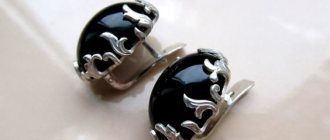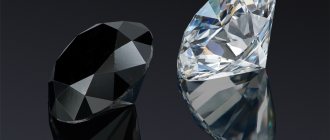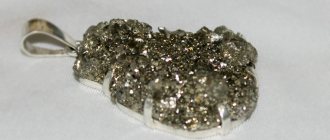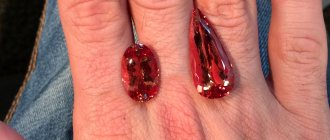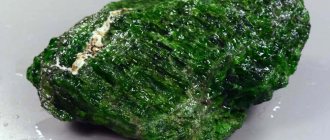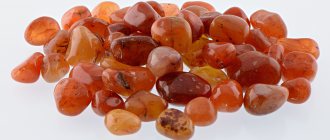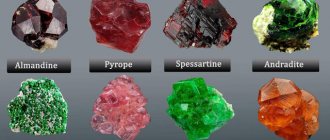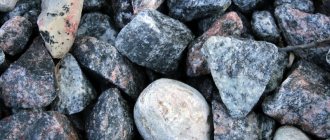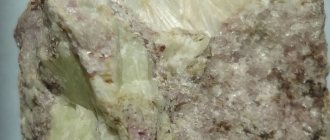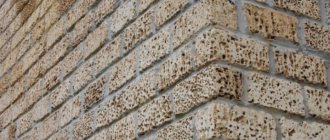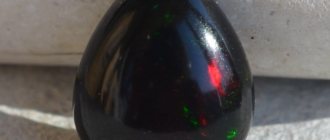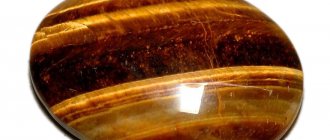Story
Natural green amber is one of the most beautiful and exotic in its family. However, its share in the total volume of raw material production does not exceed two percent, which makes the mineral inaccessible to most people.
Scientists and technologists solved the problem by creating an artificial analogue.
Russian specialists started doing this half a century ago and identified the Kaliningrad Amber Factory as the “deposit”:
- The first product was burnite. It was obtained by fusing amber chips, polyester resins and dyes.
- After a couple of decades, an improved version appeared. It went down in history as Buranite (the name almost copies Bernite).
- The consumer properties of buranite exceed those of the “parent”. And there are no shortcomings that indicate resin origin.
- It also contains amber chips (up to 5%), polyester resins and dyes. However, the exact recipe and subtleties of technology are a trade secret.
It is only known that micro-explosion technology is used to create the fractures inherent in natural amber.
At first, Buranite was positioned as artificial amber, but it sold poorly. Therefore, marketers came up with an attractive name.
Cowrie resin
Kauri gum (or cowrie resin) is a substance related to copal, and had every chance of joining the triumphant procession of amber through the jewelry counters of the planet. This resin is produced by kauri trees, a type of coniferous araucaria. The history of cowries is venerable: these plants gave shelter to dinosaurs...
In case of damage to the root system, kauri trees produce a lot of oleoresin! A strong wind, swaying tall trunks, sometimes tears the roots - and then an impressive (up to half a ton!) deposit of resin forms in the ground under the tree.
However, the accumulation of resin wealth did not work out... The chemical composition of cowrie resin is only in general terms similar to the composition of amber - the same degree of similarity is observed with physical properties. Therefore, copal kauri gum is mostly used for the production of high-quality varnishes, and only in small quantities is it “modernized” by craftsmen for fake amber.
Kauri gum is usually classified as copal, despite the fact that the external resemblance of kauri gum to natural amber can be strikingly strong. In one of the museums in Auckland (New Zealand) there is an entire hall dedicated to cowrie gum. According to ordinary visitors, huge blocks of resin look exactly like amber!
What does the stone look like?
Description of a typical Buranite is akin to a gemstone:
- Transparent
- It's quite shiny.
- There are no impurities or inclusions.
Depending on the color, Buranite looks like an emerald, ruby or sapphire.
To give it a resemblance to elite green or blue natural amber, the mineral is provided with “cracks”, intricate patterns in the thickness, and slightly cloudy.
Bakelite
Leo Backland, an American chemist of Belgian origin, was a man who dreamed of success from a young age. However, the fame that phenol treated with formaldehyde brought him came from an unexpected place. Backland did not create Bakelite to falsify amber! But Europe disposed of its native’s invention in its own way...
It was not surprising that the world's first entirely synthetic plastic, suitable for mass production, was used for the manufacture of parts, cases and casings of all kinds of apparatus and instruments. Bakelite plastic went into electrical engineering and mechanical engineering, became getinax and textolite, brake pads and friction linings, adhesives and varnishes. However, in Backland's beloved Germany, his chemical brainchild, Bakelite, found a new application. The fact is that after the First World War the country became extremely poor. People didn’t have the money to buy precious stones and jewelry, but German women really wanted to be beautiful... It was for them that artificial amber, made from colored and tinted bakelite, was synthesized! The material turned out to be extremely responsive to the efforts of the production workers. By its nature, phenol-formaldehyde resin is colorless, but the introduction of impurities and small changes in the technological process make it yellow. Amber yellow! In general, businessmen only needed to take a few small steps - and the market in Germany, and after it in all European countries, was filled with “amber” beads, clips and rings made of Bakelite. The trend has been picked up by manufacturers of expensive pens. Today, more than a hundred years after the invention of Bakelite, Parker uses the fossil resin-like material in the production of its products. Nowadays, beads made of Bakelite, which imitates amber, are also produced - albeit in small batches. However, it is not easy to confuse natural stone and synthetic material...
Where is it used?
The cheap, easy-to-process mineral has found application among jewelers and decorators:
- Jewelers create sets of jewelry with inserts of any size and configuration. Basically these are earrings plus a ring plus a pendant. White or grayish metal is suitable as a frame: nickel silver, cupronickel, silver, jewelry alloy.
- Decorators cut small plastic, inlay household items, furniture, and panels.
Jewelry made from buranite
Collectors use buranite as an exhibit of the department of technological achievements.
Decorations and prices
Jewelers value Buranite for its fantastic emerald color, high hardness and ease of processing. Inserts from it are used to make all types of jewelry - bracelets, rings, earrings, pendants, beads, necklaces and tiaras.
The price of buranite products varies quite a lot. Some craftsmen offer earrings and pendants for $10, while in many jewelry stores artificial amber items can be seen for $70 or more. Buranite looks best in a silver frame, so stylish and beautiful jewelry can be found at a very affordable price in any case.
How to distinguish
Not all manufacturers indicate the origin of the product, so for connoisseurs of natural stones the relevant question is how to distinguish imitation from amber.
The properties of buranite help to do this:
- It is very bright and shiny. Amber does not look like this even after polishing.
- When rubbed against wool, it does not become electrified and does not attract hair, threads, or paper.
- It is heavier and difficult to scratch.
Imitation can be distinguished by color. Buranite is homogeneously saturated. And the Baltic mineral is grayish-green. The raw materials mined in the Dominican Republic are blue-green. Lush green natural stones are not offered for sale.
Faturan
Confusion arose with faturan, an old and well-deserved material. The fact is that faturan is old and has many faces...
The invention of faturan occurred in the ΧVΙΙΙ century. Eastern craftsmen took waste from jewelry processing of amber (dust and shavings), resin from local plants; the products were mixed, heated, pressed - and the result was faturan. The skill of the artisans turned out to be so high that faturan beads instantly became money, equivalent to coins in circulation. Matte shiny honey-red beads still make an indelible impression today. However, the three-hundred-year-old recipe has been lost, and it is not possible to restore authentic production. Everyone thought so, except for Dr. Thrawn, a Hamburg entrepreneur at the beginning of the last century. Seeing the high commercial potential in bakelite, Thrawn decided to slightly modify the technological process and pass off minimally modified (simply tinted) bakelite as faturan, beloved by the East. The scam was a success. Until the early 40s of the 19th century, Thrawn's company was supplying new-made faturan to the Middle East. Transit was carried out through Turkey. The product penetrated into all countries of Western Asia. Inspired by Thrawn's success, modern scammers continue their criminal experiments and try to imitate both natural amber and ancient faturan by mixing who knows what synthetic ingredients. At the same time, everyone unanimously calls their crafts faturan. Neither Dr. Thrawn's bakelite nor the crafts of our day have anything to do with the ancient faturan that has become precious. And faturan itself (even the most real one) is very indirectly related to amber...
How to care
Buranite is stronger than amber and easier to care for:
- Store separately from other products.
- Remove dirt with warm water (you can use soft dish gel) and a soft cloth or brush.
- Then wipe dry to avoid water stains.
- Soda, vinegar, strong household chemicals, and abrasives are prohibited.
- Make sure that the frame cleaner does not come into contact with the insert.
Jewelry is removed when going to the sauna, swimming pool, gym, or the beach.
Celluloid
Celluloid as we know it was invented in America in 1869. John Wesley Hiatt, who patented the name of the new material, sought to create a full-fledged replacement for ivory. However, his followers went further and managed to synthesize a material vaguely reminiscent of natural amber from camphor, nitrocellulose and colloidal dye. Celluloid imitating amber was used as a decorative cover for cutlery. Handles were molded from it. They were used to decorate various household products. Celluloid plates with a pseudo-amber texture are still produced today. In most cases, the color of such products is bright, flashy, and has nothing in common with a beautiful fossil stone. In modern conditions, the production of celluloid is limited: this material is extremely flammable, its use anywhere is considered unsafe. It’s not easy to stumble upon celluloid “amber” on the jewelry market...
Magical and healing properties
Buranite has no healing effects or magical properties. The reason is clear: amber takes millions of years to form, absorbing the energy of nature. Buranite is created in a couple of hours, the amber crumb is only 5% (sometimes 0%).
For the same reason, astrologers do not attach importance to the mineral.
Artificial origin is not always a minus: jewelry with buranite will suit everyone, regardless of their zodiac sign, lifestyle or character traits.
Color therapists say: magic is created by the color green. It strengthens vision and gives rest to the eyes. A bright stone improves your mood. And this is the key to mental balance and physical health.
Origin of the gem
Over the years, a variety of imitations of amber have appeared on the market. One of the most beautiful was burnite .
At first, the green gem was positioned as an imitation, but it became so popular that the name “burnite” became self-sufficient
Then manufacturers began to experiment with bernite itself and change its color. This is how a crystal of a sparkling emerald hue appeared, which became even more popular than burnite. The green sample became known as buranite. It is an array of hardened resin . Born in laboratory conditions thanks to improved technology for creating bernite. This nugget was created in Russia, in the Kaliningrad region. And this is not surprising, because it is here that rich deposits of some of the most beautiful and valuable specimens of amber are located.
Buranite is actually created on the basis of resin (resin from coniferous trees). But if nature takes thousands and millions of years to create colored rocks, laboratories can do it much faster. Manufacturers use up to ten varieties of wood resin, a small amount of natural amber (up to 5%) and a special technology that allows them to imitate the structure of a hardened crystal and create internal cracks.
Thus, Buranite is not plastic or glass , but a rock created in a laboratory using resins. An artificial crystal has a sparkling emerald color, while a natural one may have a cloudy marsh or brown-green color.
How is it used in treatment?
Since ancient times, the mineral has been famous for its healing properties. Real stone promotes rejuvenation. This feature of the mineral is actively used by cosmetologists, using it to create anti-aging and healing skin care products.
- The stone copes well with headaches, sleep disorders and chronic fatigue.
- It is used to combat allergic reactions and skin diseases.
- In addition, the gem helps to cope with the effects of hypothermia and colds.
- In combination with herbs, it significantly improves the condition of a person who suffers from asthma.
Lithotherapists offer many options for using the beneficial properties of the shungite mineral. It can be used to combat diabetes, diseases of the skin, liver and digestive organs. To improve the condition of such diagnoses, it is necessary to apply shungite-based applications to the body.
To eliminate pain in the lower back, you should use bags with healing stones. They eliminate osteochondrosis, attacks of radiculitis and pain in the joints. A great option would be a foot massage using a stone.
Only real, natural shungite has healing properties. Therefore, it is important not to buy a fake.
Shungite helps neutralize the effects of geopathogenic zones that pose a mortal danger to humans. Scientists have been able to prove that people who suffer from cancer usually live in areas with high concentrations of dangerous radiation. The mineral provides reliable protection against electromagnetic energy.
The medicinal properties and contraindications to the use of shungite have not yet been fully studied. However, it is already known today that this mineral is quite active. That's why you can't wear it all the time. In this case, instead of the expected benefit, it brings harm to its owner and provokes kidney problems. Experts also advise extreme caution for people with low blood pressure.
You should not wear jewelry with shungite constantly without removing it.
Origin and deposits of shungite stone
Many people are interested in what shungite is. This term refers to rock, the basis of which was once organic sediments. They were converted into carbon during a long stay at an impressive depth underground. The structure of the stone resembles graphite.
The first description of the rock was recorded several centuries ago. At first, academician N. Ya. Ozeretskovsky recorded information about her. This happened in 1792. After which, in 1848, mining engineer N.K. Komarov started talking about shungite.
Shungite was discovered in the Transonezh village of Shunga. The mineral was named in his honor. The name was given to it by A. A. Inostrantsev.
In 1928, the Shungite State Trust was formed. Until 1937, the study of this rock was carried out. At first it was assumed that it had properties reminiscent of coal.
Shungite as a filter material
Water that has been purified by shungite can be used for medicinal purposes. To make a useful composition, you need to take a glass or enamel container, pour water into it and immerse shungite in it. Close the lid and leave to infuse for 3 days.
The finished liquid can be drunk without prior boiling. It can also be used for washing and cooking. It is useful to use the composition for rinsing the throat and nose.
The infusion is perfect for steam inhalation. The liquid should first be heated to a maximum temperature of 90 degrees.
Shungite water is suitable for inhalation by inhaling steam. Before this, the liquid is heated to a temperature not exceeding 90 degrees.
To prepare a medicinal infusion, shungite must be mixed with water.
Shungite, whose properties are associated with a unique molecular structure, helps purify water from heavy metals. As a result, the liquid is filtered. In terms of taste, it is similar to spring water.
The mineral successfully copes with foreign odors. From the resulting water it is possible to prepare healing infusions that contain shungite liquid and medicinal plants.
Shungite can be used for baths, which help relieve tension and fatigue. Ointments are often prepared on the basis of the stone, which successfully eliminate pain in the joints, cope with the symptoms of radiculitis and arthrosis, and treat dermatological pathologies. Purified water can be stored for six months.
